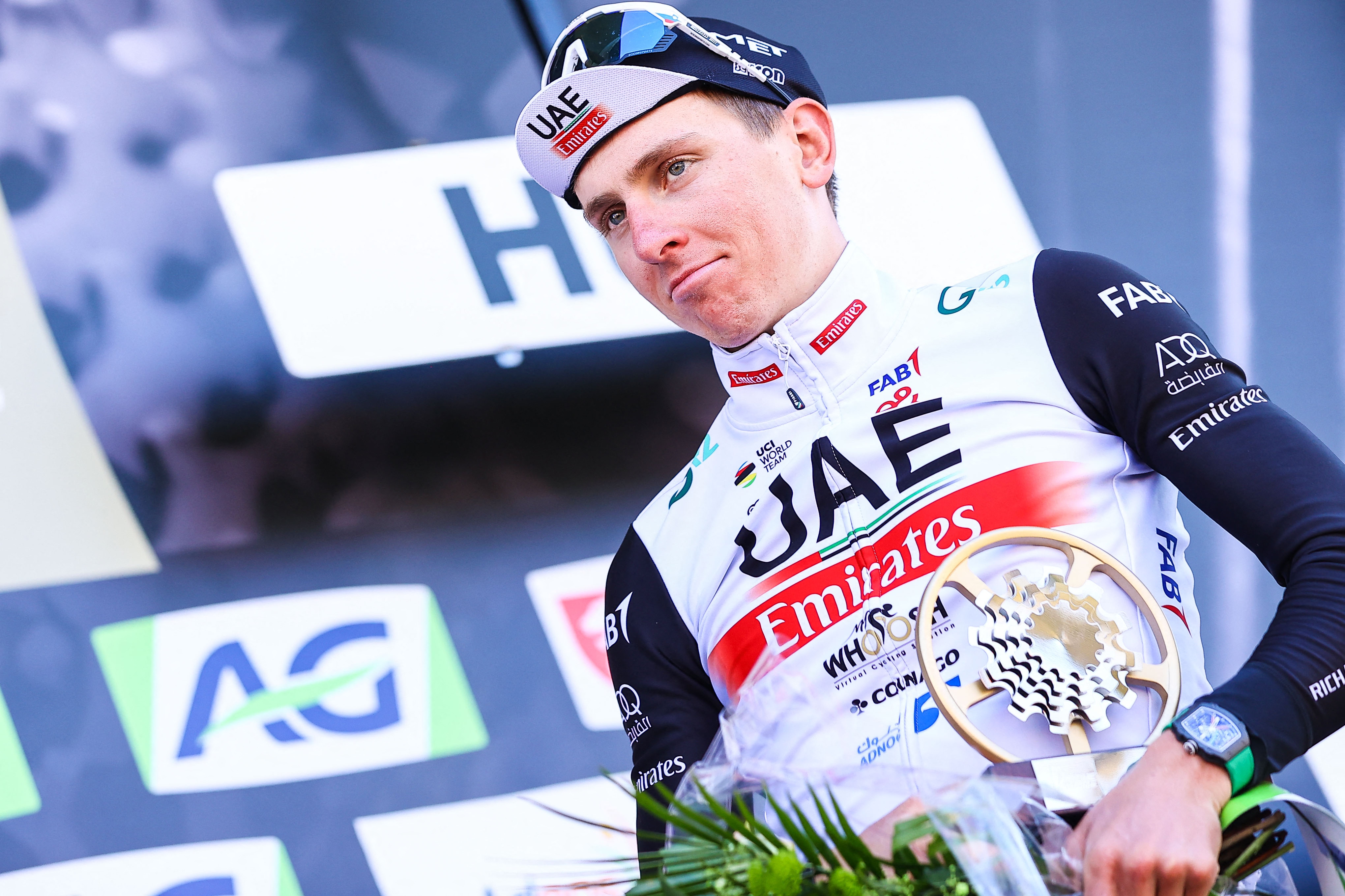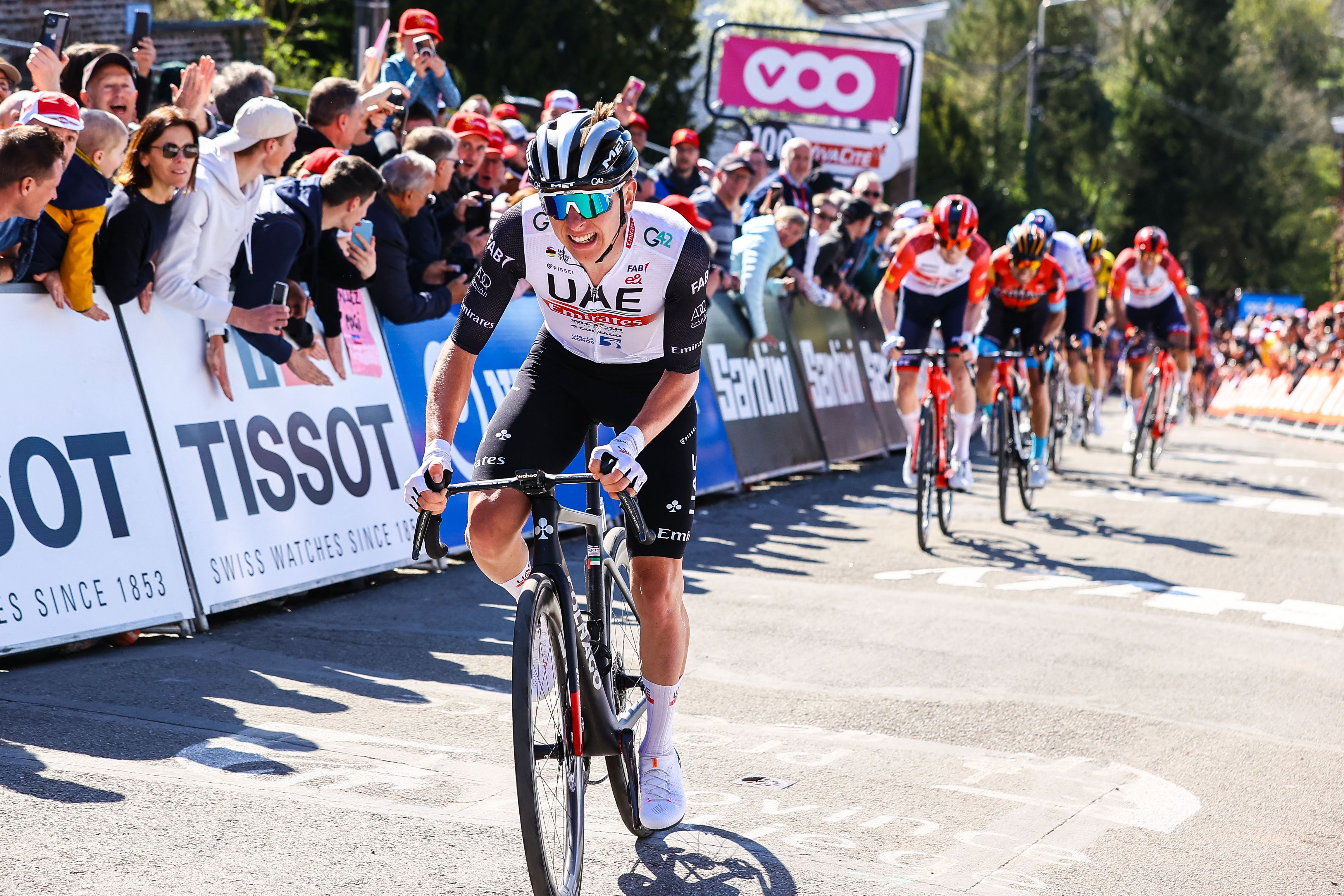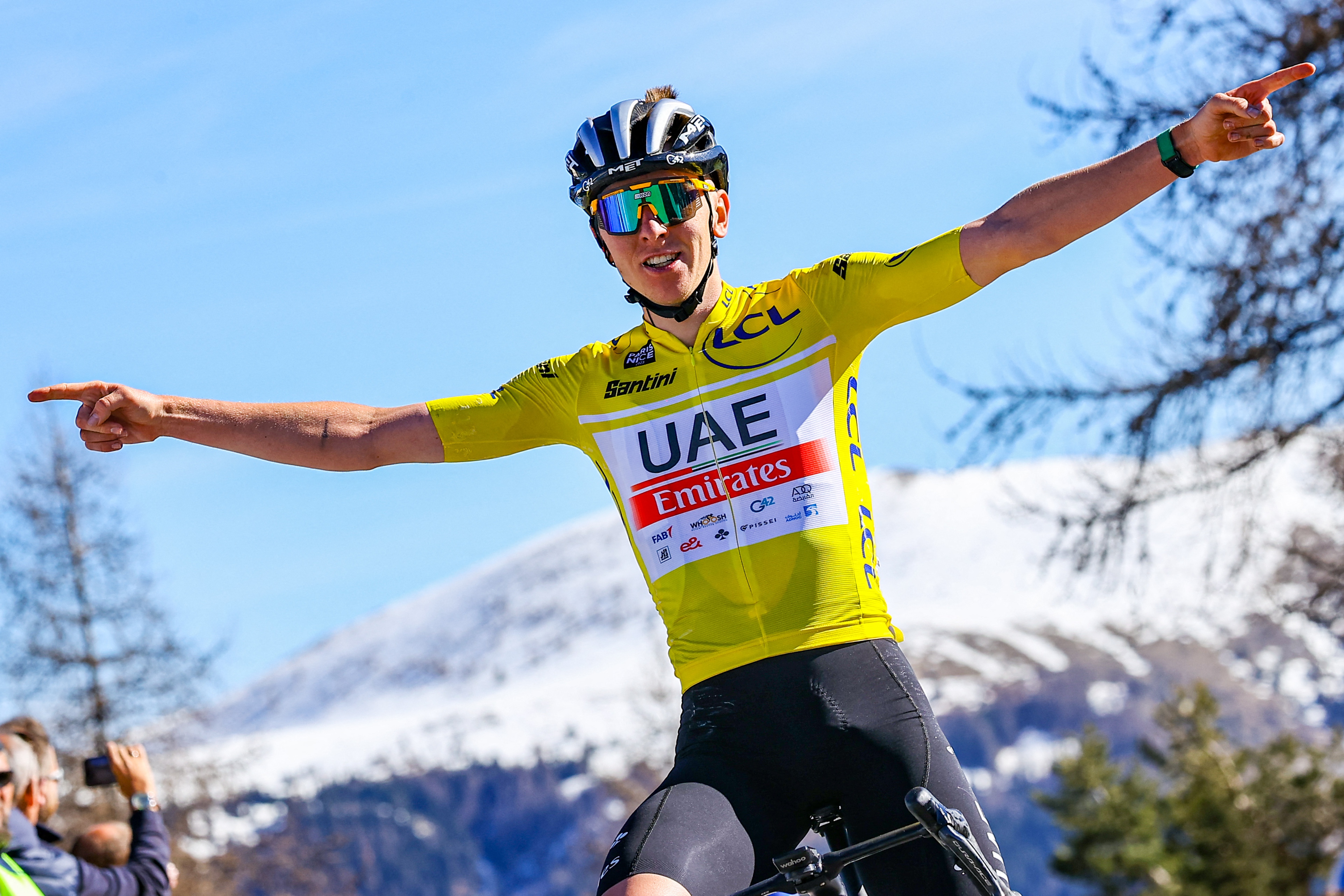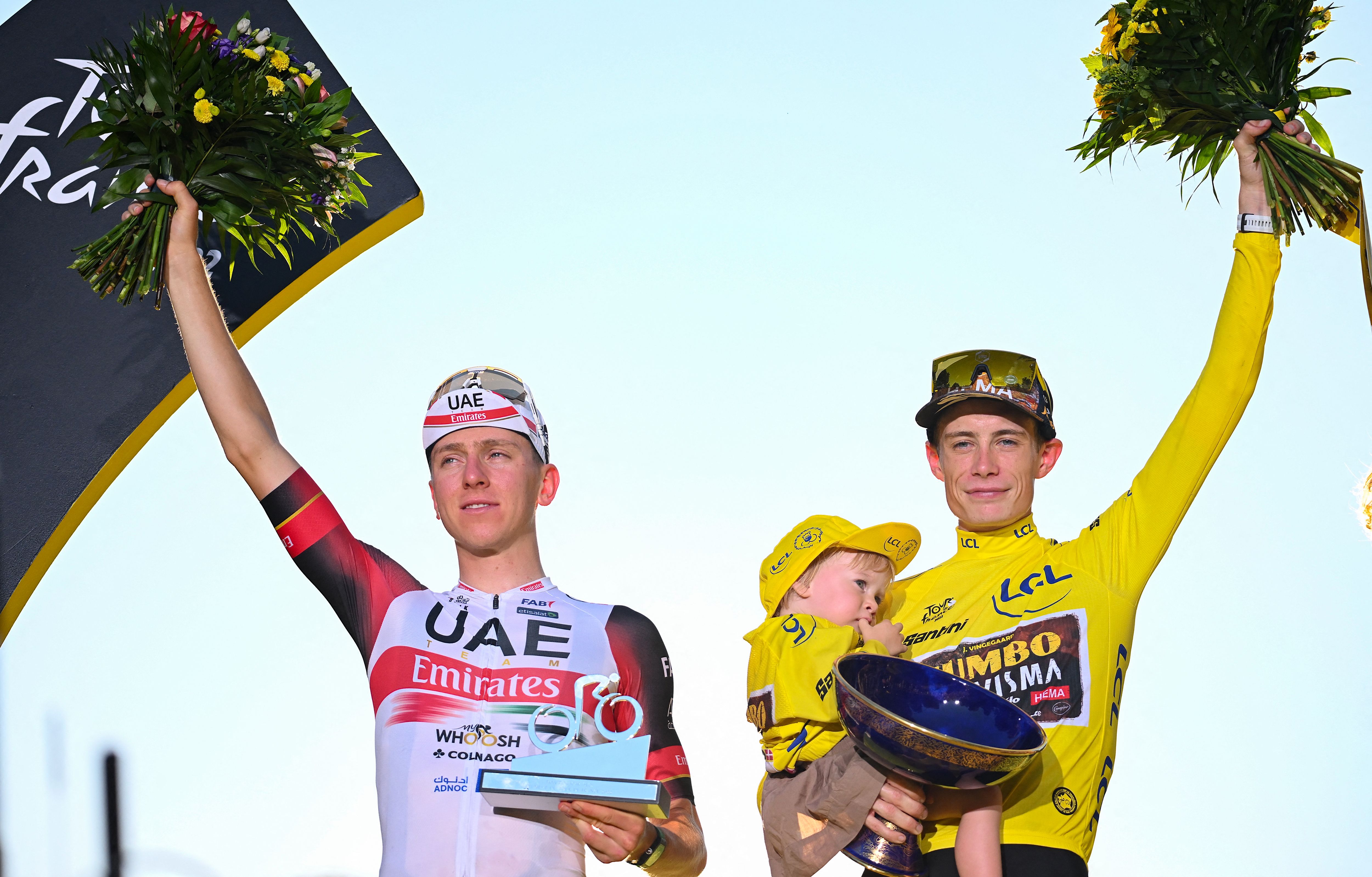Tadej Pogačar: I have nothing to lose in this year's Tour de France
Slovenian discusses his 'totally different mindset' and taking on Jonas Vingegaard


Even by the standards of his remarkable career, Tadej Pogačar has packed a lot into the opening half of this season.
For just about any other rider, a sequence of spring success including the Tour of Flanders, Amstel Gold, Flèche Wallonne and Paris-Nice would make 2023 a resounding success regardless of what happened thereafter. Pogačar, however, is no ordinary rider.
The non-stop flow of victories in the first four months of the season may have helped ease any lingering discomfort over an unexpected defeat at the 2022 Tour de France – arguably one of the biggest upsets in the race in decades – though the challenge of regaining his lost crown at the 2023 Tour de France was always going to loom large over his season no matter what came before. Then the plot line changed all over again when he crashed and broke his wrist at Liège-Bastogne-Liège in late April.
The 2023 Tour is no longer only about the Slovenian striking back after his defeat at the hands of Jonas Vingegaard last year. Now it’s also about his comeback from the first ever major injury of his professional career.
Pogačar returned to racing at the Slovenian national championships last week, winning the time trial and road race, and he is now in Bilbao for his fourth Tour start. Just ahead of his triumphs in Slovenia, Cyclingnews was among the small group of reporters who spoke with Pogačar for his last major interview ahead of the Tour.

We have to start with the obvious question: how is the wrist?
Get The Leadout Newsletter
The latest race content, interviews, features, reviews and expert buying guides, direct to your inbox!
The wrist is getting better every day. I don’t have 100 percent mobility yet, but on the bike I feel good. I’ll do a scan five days before the Tour to see if the bone is healing the right way. But that’s just to be sure and that way I won’t go too crazy about it.
Does your wrist still hurt when you’re riding your bike?
Actually I’ve never felt any pain when I’ve been riding, but maybe that’s because I never push directly on the bone when I do that, and I can’t really bend the wrist a lot. It just feels blocked a little bit, but I’m happy there’s no pain there. So I could do some good training in these last few weeks as a result of that.
The last time we had news from you was after your training camp in Sierra Nevada. What have you done since then?
I was in Sierra Nevada for a bit more than two weeks. I really like the area for training there, especially with an injured wrist. The roads are pretty good and there’s not too much traffic, so it felt pretty safe.
Then after Sierra Nevada I went to the French Alps to check out some stages of the Tour and since then, I’ve been in Sestriere for a bit more training with the guys. After which come the Nationals and then the Tour.
Were you worried at any point in the last couple of months that you might not be ready for the Tour, or were you always confident you’d make it in time?
I was a bit worried the second week after the injury happened when I had the full cast on, because I couldn’t even get on the home trainer. But I got some good help from some good physios and they made me a plastic cast that meant I was more agile. After that I was pretty sure I could do the right preparation for July and every day I was more hopeful I could be 100 percent in the Tour. From that point on, I never had any doubts.

There has been a heatwave in much of Europe in recent weeks. Are you doing anything different this year to combat the heat, because we know it’s not something you particularly like? And in the Tour, in July in France, the heat could be tough again...
After the crash, when I started riding on the home trainer, I spent time in Monaco, where it’s already pretty humid and hot. So that helped me with heat adaption, and that was why we went to Sierra Nevada, too.
However, this year the weather was not so good in Spain: we got a little bit flicked, it wasn’t 30 degrees every day! But it was still pretty warm, so I continued to adapt a bit more to the heat there.
I also experimented with wearing some more clothes when training and we changed the nutrition and water intake, which is very important when it comes to heat adaption. So when it comes to this year’s Tour de France, we have taken a step forward.
Has your body had to adapt much otherwise in this last part of the preparation? Have you lost any weight?
In the Classics I was a little heavier – well, not heavier, let’s call it my ‘spring weight’. And then after Liège, I didn’t do any long, intense training rides, just short ones on the home trainer, running and walking. So I built up some more muscle mass and I gained some fat, which I then lost again.
All in all, my weight is at a pretty good level, nothing extraordinary. I think I’m on the right track. I would say my body weighs around the same as when I perform at my best. So all in all, my weight is not a problem for me.
What can you say about your teammates for the Tour de France?
We’ve had a lot of injuries this year but I’m really happy with the team we’ve got for the Tour. Everybody is super-super-motivated and we can’t wait to start.
During this last month and a half have you had to adapt your planned training programme a lot because of the injury?
I would say that I started proper training a few days later than I would have done if I hadn’t been injured and for the first few weeks I was compensating low-intensity training with running, hiking, even swimming. I did a lot of different sports and spent a lot of time on the home trainer. The total number of hours was more or less the same than when I was training normally, though, and the intensity was even higher.
Up until Sierra Nevada the training was a bit different. But once I got to Sierra Nevada, my base level was good, so we just completed that with some efforts and intensity work.
Maybe this approach to the Tour will be even better than usual, by coming in a bit fresher. Compared to other years, overall, my approach is only a little bit different.
Did you watch the Critérium du Dauphiné? What did you make of Jonas Vingegaard’s performance?
I think he made quite a statement there. He showed he could win the race with almost one leg. He’s already looking to be in super, super good shape. So now all eyes are on him, he’s going to be the main ‘character’ for the Tour.
But I was happy with the Dauphiné. I was sad I couldn’t race it, but my team turned in a great performance, particularly because they saw this race as preparation for the Tour. They weren’t under so much pressure when it came to taking the overall victory and I must say that my biggest takeaway from this race is that I can trust my teammates.
You said that Jonas Vingegaard is the main ‘character’ for the 2023 Tour de France. Does that mean you think Vingegaard is now the favourite for the 2023 Tour de France?
Yes, I think so. In the Dauphiné he tried to show that he was dominant, that he can win easily, and I think that now, at the Tour, everybody will be looking to see what he does.
I haven’t been racing since the Ardennes, I’ve been injured and other guys from the Dauphiné who are the main competition [for the Tour] couldn’t follow Jonas. So everybody will just expect him to win the Tour easily.
Is it perhaps better for you that you’re not considered the main favourite?
Yes. For two years I’ve been defending a Tour title, and that’s a different kind of pressure compared to when you’re attacking. This year I have nothing to lose.
I’m coming back from an injury and whatever happens, happens. I think I’m in good shape, but you never know what can happen. I haven’t raced for a good while. I’ve got a totally different mindset compared to last year, for sure.


Have you worked with somebody to create this different mindset or was it more or less up to you?
Yeah, more or less it’s up to me. We have a psychologist in the team, but I think I’m pretty relaxed in my head. I don’t put myself under too much pressure, and I know we have a really good team for the Tour. We know what we have to do.
Have you done much training on the time trial bike?
In the Tour there’s one time trial, it’s 26 kilometres long with some climbing. So I did some good training on the TT bike, particularly as using that bike was easier some days on my wrist.
Did you have time to watch the Netflix series on last year’s Tour?
No, I haven’t watched it, yet. But I didn’t get to it because basically I know everything that happened in last year’s Tour, anyway.
Do you know what to do to make sure that what happened last year in the Tour won’t happen again?
Yes, but I don’t need to watch Netflix to refresh my memories because they are quite fresh in my head. But I heard it’s a nice series, they did it really well, and for sure I’ll watch it in the coming weeks.
Do you think you’ll be in next year’s series?
I don’t know yet. We’ll see.
Did you watch the recently completed Giro NextGen at all, with the stage victory of your friend Jan Christen (Hagen-Bermans-Axeon)? What do you think of the guys racing at this level?
I didn’t follow the U-23 Giro so much, just looked at the results. But I could see it was a really hard parcours, it's always really hard. You can see the top riders that will come in a few years, so I was really happy also for Jan Christen. He won in a spectacular way and he won for his countryman, for Gino [Mäder].
Were you really shocked by what happened to Gino Mäder?
Like Jan, I think the whole cycling world and even some people outside the cycling world will ride in his memory. I was watching the Tour of Slovenia, there were some nice gestures made there.
What happened is really sad. It’s a tragedy. Gino didn’t have anybody who hated him, he didn’t have any kind of bad relationship with anybody in the peloton, and the same goes for journalists. I think he was always super-kind and friendly to everybody.
It’s a big shock. We raced a lot together, since U-17 basically and we had nice battles, I remember, like in the Tour de l’Avenir. I’m honoured that I could have raced with him.

Alasdair Fotheringham has been reporting on cycling since 1991. He has covered every Tour de France since 1992 bar one, as well as numerous other bike races of all shapes and sizes, ranging from the Olympic Games in 2008 to the now sadly defunct Subida a Urkiola hill climb in Spain. As well as working for Cyclingnews, he has also written for The Independent, The Guardian, ProCycling, The Express and Reuters.
